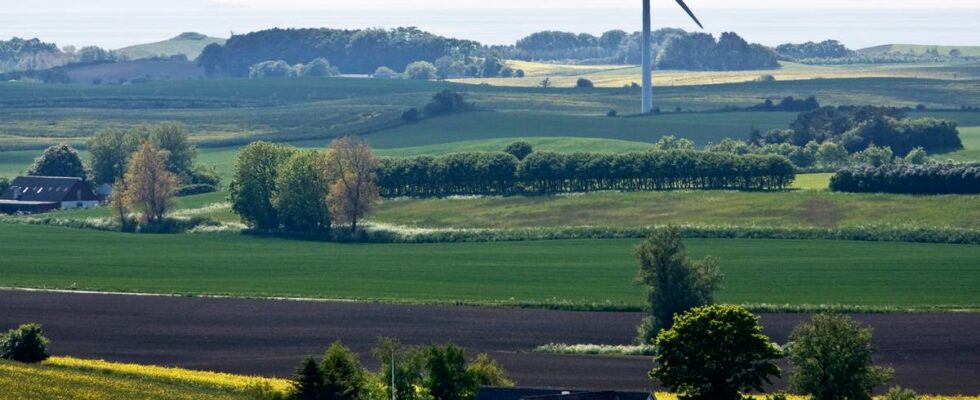The agreement is ready after a major settlement between the government, several political parties and representatives of farmers’ organizations and others, writes DR. Denmark is one of the countries in the world where agriculture accounts for the largest proportion of greenhouse gases. Agriculture currently accounts for around 30 per cent of total Danish climate emissions. The corresponding figure in Norway is just under 10 percent, according to Energy and Climate. In Denmark, it is expected that agriculture’s share in 2035 will increase to 49 percent as other industries cut their emissions. Norwegian agriculture, if we cut in line with the recommendations from the Climate Committee, will be responsible for 75 per cent of emissions in 2050. – We must cut emissions in agriculture. Then the question is whether the CO2 tax will hit the way we want or not. So it will be exciting to follow what they are doing in Denmark, says Lene Westgaard-Halle, parliamentary representative for the Conservative Party. 59 per cent of the emissions in Norwegian agriculture consist of methane. A whopping 2.3 million tonnes of methane emissions, i.e. more than half of emissions from Norwegian agriculture, originate from the stomachs of cows and sheep. Photo: FABRICE COFFRINI / AFP Will become a model for the world In working with the tax, the Danes have aimed for it to be a model that can be copied by other countries. The Danish Minister for Foreign Affairs, Lars Løkke Rasmussen, therefore helped present the proposal yesterday. – I have been involved for a long time, but I do not remember being involved in entering into a political agreement where we knew that this was something that was going to stand. This is not something that disappears, says Løkke Rasmussen. Whether the tax will also be imposed on Norwegian farmers in the coming years is neither very likely – nor impossible. The Conservative Party has proposed a CO2 tax on agriculture in Norway in the last two alternative state budgets. – CO2 tax is definitely relevant for Norwegian agriculture, but I don’t think we will see the high tax level that Denmark has introduced in Norway for quite a few years, says Westgaard-Halle. Cuts less than other industries From 2030, Danish farmers must pay 120 Danish kroner (182 Norwegian kroner) per tonne of CO₂ emitted from the farms. This is lower than the CO₂ tax of 750 Danish kroner per tonne that most other industries must pay from 2030. In 2035, the tax from agriculture will be increased to 300 Danish kroner (457 Norwegian kroner) per tonne. In February, an expert committee put forward three proposals for a CO₂ tax for agriculture. The model that was adopted on Monday was the cheapest and least invasive for the farmers. Danish agriculture is facing changes that could affect the Danish landscape, say experts. Photo: NTB SP: Not applicable for Norway now A similar tax for Norwegian farmers is out of the question for the Center Party. – Such a tax will make Norwegian food more expensive, give less income for the farmer and the result of such a tax will be less food production in Norway. And if there is one thing we know, it is that we will need more food in the future: – So this is a very bad solution, says Gro Anita Mykjåland. Gro Anita Mykjåland (Sp) says the Center Party believes that a CO2 tax on Norwegian food production is out of the question. Photo: Peter Mydske / Stortinget Mykjåland says she experiences that Norwegian agriculture, and the various food producers in Norway, are concerned precisely with the environment and sustainability – and that the climate footprint of Norwegian agriculture can be reduced in other ways. – Including through the creation of Bionova, which is a separate restructuring fund for agriculture in Norway, says Mykjåland. It seems that Westgaad-Halle is not enough to cope with the necessary cuts in the sector. – Emissions go down a little in agriculture, but that’s because you don’t have as many cows. It’s not because you actually cut back, she says. The Norwegian Farmers’ Association, like the Center Party, is not positive about another tax on agriculture. – Other emissions sectors have to pay taxes for their emissions, why should you “get away”? – Introducing taxes linked to food production will not lead to reduced emissions. Then it makes far more sense to work on reducing emissions per unit produced, says Egil Chr. Hoen, deputy chairman of the Norwegian Farmers’ Union. The Norwegian Farmers’ Union believes that locally produced Norwegian food is the most climate-friendly food you can eat in Norway. Photo: Norsk Bondelag – It is clear that the effect of reducing Norwegian food production and increasing imports will look good in a Norwegian emissions account, but then we have only moved the problem to another part of the world, and in a global perspective you get a lot look worse. There will be more nature The agreement also means that a large fund will be created which will be used to close unproductive agricultural areas. The fund is called a “green land fund” and is to be worth 40 billion Danish kroner (or 60 billion Norwegian kroner). We are talking about large areas that will be converted into forests, marshes and meadows. According to DR’s climate analyst, the total is an area the size of half of Funen, Denmark’s second largest island. The agricultural area in Denmark amounts to around 2.6 million acres. That is 60 percent of the country’s area. Even if the agricultural area is cut by a third, Denmark will have significantly more agriculture than the average in other EU countries. Photo: Mads Claus Rasmussen/ / Reuters Published 25.06.2024, at 21.09
ttn-69
Denmark signs historic climate agreement – news Norway – Overview of news from various parts of the country

